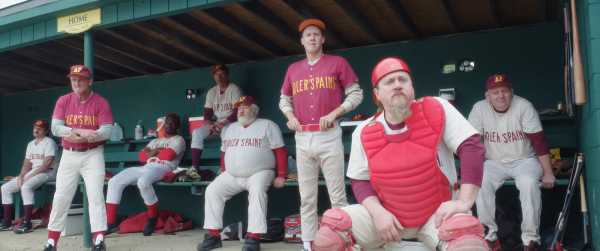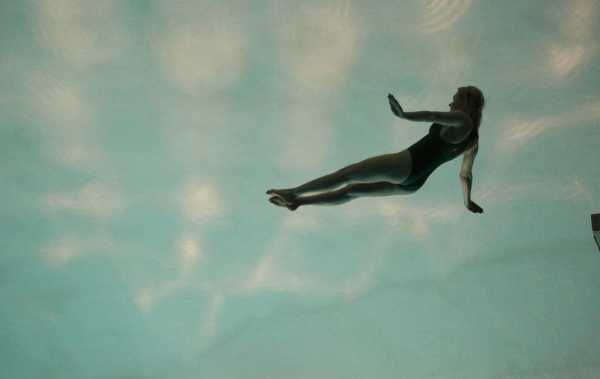
Save this storySave this storySave this storySave this story
This year’s Oscar season is shaping up like this year’s baseball season: both feature an unusually wide-open and competitive field. The New York Film Festival, which runs Sept. 27 to Oct. 14, reflects this broadening: it’s not often that the opening-night film is a director’s début dramatic feature, but that’s how it is this year. The film in question, “Nickel Boys,” is by RaMell Ross, and his strikingly stylized documentary “Hale County This Morning, This Evening” (2018) has me impatient to see it. (It will be released in theatres Oct. 25th.) Some other likely Oscar front-runners that will be screening in the festival include Pedro Almodóvar’s “The Room Next Door,” Sean Baker’s “Anora,” and Brady Corbet’s “The Brutalist,” all of which have scheduled releases. For now, I’ll be looking at some of the films, playing in the festival’s first week, that are less likely to figure on awards-season ballots.
The making of movies is fitful, and the happenstance of which filmmakers happen to have recently completed a movie means that one should be cautious about drawing big conclusions from the offerings of any one festival. Still, this year’s N.Y.F.F. slate suggests that there’s a new trend in independent and art-house movies toward grandiosity. Perhaps influenced by the difficulties of the marketplace—more than ever, a movie needs to make not just an impression but a splash—filmmakers are ramping up the demonstrative force of their work. A movie stands a better chance if it is not merely a work of art but something close to a news event, a happening. Such flair for spectacle and buzz is a quality independent of artistry: to some filmmakers, it comes naturally and has just been waiting, latent, for circumstances to bring it out; others it doesn’t suit at all, producing a feeling of strain and insincerity; and for a few it merely intensifies an ostentation that has always been their stock in trade, the secret to their success, however dubious.
What’s certain is that the economics are desperate, especially for independent and international films. I’m looking at my best-films list from last year, and near the top are several low-budget films: “All Dirt Roads Taste of Salt,” “Passages,” and “Earth Mama,” whose U.S. box-office takes were, respectively, $52,084; $551,611; and a figure so low as to be unreported. That’s a snapshot of a crisis, and it’s hard to blame filmmakers whose response is to try to stand out from the crowd by means of spectacular effects. In any case, whether or not the crisis persists, the movies that have been its symptomatic victims will endure and be remembered. What’s in danger isn’t the long-term appreciation of any individual works but the careers of their makers, their ability to make more films and expand their artistry.
This year’s Revivals section, featuring new restorations of classics both familiar and not, includes a sobering reminder of the precariousness of film careers: “Compensation,” by Zeinabu irene Davis, from 1999. It’s one of the finest American independent films ever, but it didn’t play in the New York Film Festival when it was new and didn’t get a regular theatrical release. Davis hasn’t made another dramatic feature since. The nineteen-nineties were something of a dead zone for the distribution of independent and international films; it worries me that the nostalgia machine’s recuperation of that decade’s celebrated films is also bringing back the decade’s oblivious indifference. One can’t, of course, foretell the commercial prospects for the best films in this year’s New York Film Festival, but their place in history is already assured.

Photograph courtesy New York Film Festival
“Eephus”
The worst part of baseball movies is usually the baseball itself, but Carson Lund’s first feature does the idiosyncratic sport honor with an eccentric story about players whose devotion to the game far exceeds their skill and whose time on the field is a focal point in their lives. “Eephus” (Oct. 2-3 and Oct. 10) is set amid the autumnal foliage of a small town in New Hampshire, where the local ball field is about to become a construction site for the town’s new middle school. Two club teams—think Little League for adults, with one team’s uniforms bearing the name of a local paint store—get together to play there one last time, and time itself becomes the very story. The athletes are, for the most part, athletically challenged—a few are young or at least fit, but more are middle-aged and creakily out of shape—and professionalism is not much in evidence. Because the umpire, a cantankerous aging hippie, goes by the book, the game nearly doesn’t happen at all, when one guy’s obliviousness to game time risks his team being a player short.
The crowd numbers in the single digits—it’s mainly one guy, who ends up doing yeoman service when a crisis ensues—but family and neighbors show up to pull the players’ attention further from the field than it belongs. It’s a joy to see one player dangle dreamily from a dugout ledge, to see another observe the action from the outfield as if he were a spectator, to hear players apostrophize to themselves about the action on the field and the messes of their lives, to hear the whole bunch break one another’s balls over matters of mind and body, of sport and character. A vender who drives up in his pizza truck becomes a soliloquist of philosophical bleakness; a couple of skateboarding youths make hipster fun of the whole sport. When a pitcher has to tap out, a crusty visitor who talks with nostalgia about the game’s lost glory days and his own vague place in them agrees to take over. He’s played by Bill (Spaceman) Lee, a great major-league pitcher from the sixties to the eighties and one of the sport’s celebrated characters.
Lee himself is intertwined with the movie’s title. The eephus is a high-arching, ultra-slow pitch that’s somewhere between a secret weapon and a joke. The freethinking Lee used it often in his professional days, and, in the movie, it’s defined by one player as a device that makes batters “lose track of time.” The metaphor sticks; in a way, the main character of the movie is time, the approach of night that puts the conclusion of the game, the season, the league, and the players’ last moments together in doubt. Yet what overarches the grand and sentimental drama is Lund’s vision of the details. He’s best known as a cinematographer, and, though he didn’t shoot “Eephus,” he composes its action with a cinematic eye—a spectrum of angles and distances and points of view that suggest an overwhelming and ironic intricacy that defies the smoothly packaged unities of televised sports.

Photograph by Xavier Lambouirs / Courtesy New York Film Festival
“Misericordia”
Alain Guiraudie, who is gay and from a small town in the South of France, has long been making dramatic features about the prevalence of queerness amid ordinary working life in the country’s rural locales. Like his best-known film, “Stranger by the Lake” (2013), “Misericordia” (Sept. 29-30 and Oct. 8) is a thriller, a crime story revolving around men’s sexual relations and desires. True to its title, the new film adds a religious element to the drama and, in the process, looks behind the scenes at clerical life. The action is sparked by the death of the only bread baker in a village that’s losing residents and is barely self-sustaining. A young man named Jérémie, the baker’s former apprentice (who’s now employed in a city), returns for the funeral, stays on as the guest of the baker’s widow, and arouses the suspicions of the baker’s bereaved son, with whom Jérémie has an uneasy history. What emerges are powerful desires that are frustrated by circumstances and conventions. These give rise to violence, which in turn prompts a police investigation and the intervention of the town’s priest. Pulling undercurrents to the surface and displaying intimate relationships in the harsh glare of civic power, Guiraudie exposes the erotic energy on which society runs and the soul-killing repression that smothers small-town life like a pall.
“Dahomey”
In 2021, in a much-publicized act of repatriation, France returned to Benin twenty-six works of art that had been taken in 1892 from what was then the West African kingdom of Dahomey. The filmmaker Mati Diop, whose first feature, “Atlantics,” blended a supernatural drama with documentary elements, reverses the equation in “Dahomey” (Sept. 28, Oct. 1, Oct. 3, and Oct. 11), which, among other things, is a straightforward report on the repatriation. Diop gets to listen in on discussions among employees in the Paris museum from which the art works are being removed; curators and staffers at the museum in Abomey, Benin, where they’ll be displayed; and students in Abomey who give voice to a wide range of viewpoints—from enthusiasm for the art’s own power to indignation that France still holds on to hundreds of other pieces of colonial-era plunder. She also adds, with a wondrous twist of fiction, the voice of history itself: one of the real-life figures represented in a repatriated statue, the nineteenth-century King Ghezo, speaks on the soundtrack in a monologue that punctuates the film throughout. Moreover, Diop films the practicalities of the repatriation with incisive imagination. The manipulation of the statues makes them seem almost like living beings in bondage; and the boxes into which they’re packed are akin to coffins; their return home is a resurrection.
“A Traveler’s Needs”
The South Korean director Hong Sangsoo does more with less than any filmmaker now working. Like last year, he has two films at the N.Y.F.F.; the one appearing in the first week, “A Traveler’s Needs” (Oct. 2-3), stars Isabelle Huppert (in their third collaboration to date) as a somewhat mysterious visitor to Korea who is eking out a living teaching French to Korean people with whom her common language is English. The movie is anchored in her encounters with her students, who are adults; the relationships are professional in form but personal in content, ranging far beyond grammar and vocabulary to the very stuff of their lives—and, with a documentary-like attention to her students’ voices, she mines their remarks for the substance of their lessons. It’s a poetic method in keeping with her poetic character, but her activities also prove to be something of a sociopolitical litmus test: her presence and her way of life provoke responses that are emblematic of larger matters of mores and morality. The movie was, as the credits say, written, directed, photographed, edited, and scored by Hong, with just a small crew. Working on an intimate scale, he looks widely at Korean life and deeply at the essence of art.

Photograph courtesy New York Film Festival
“It’s Not Me”
The modern subgenre of the self-portrait film is a mighty challenge, and it’s one which Leos Carax, one of the most exuberantly inventive of modern directors, meets with excited style and trenchant substance in “It’s Not Me” (Oct. 2 and Oct. 7), a forty-one-minute movie that offers more to ponder and to treasure than many three-hour features. The film proceeds under the sign of fiction—a hypothetical response to a question that Carax can’t answer, of which the first word (“merde,” meaning “shit”) is also the name of a character he invented, who’s played by Denis Lavant, the actor who has been something like Carax’s alter ego in films dating back to 1984. Carax imaginatively manipulates and edits a vast repertory of images, ranging through emblematic moments in his own films (most famously, Lavant’s dash through streets, in “Bad Blood,” to the sound of David Bowie’s “Modern Love”) and through classics of the history of cinema (including films by Lubitsch and Rossellini). He looks at family photos, clips of comics, and his home movies, adding some new scenes that he films with a self-scathing comedy, staring into the heart of grief. Considering the demons of political history in whose shadow he was raised and contemporary injustices that fill him with rage and shame, Carax considers his conscience in a cinematic light and sees himself in the masterworks and the personalities to which he has fused his identity. P.S. Under no circumstances should a viewer leave the theatre during the end credits; there’s a tag scene—comedic, poignant, wryly self-referential, and spectacularly clever—that’s a mini-masterwork in itself.
“Scénarios” and “Exposé du Film annonce du film ‘Scénario’ ”
One of the filmmakers to whom Carax pays homage is Jean-Luc Godard, who died, by assisted suicide, in 2022. These two posthumously completed short films by Godard (Oct. 2-3) involve radically different standpoints. The first one, “Scénarios” (“Screenplays”) is something like a terminal movie, with chapters of medical import titled “DNA” and “MRI.” It’s an allusive, retrospective work that gazes at the end of things in cinematic terms: Orson Welles in “Citizen Kane” looking aged though actually young; the killing of the character played by Anna Magnani in “Rome, Open City”; a pained farewell, to the sound of great music, from Godard’s own film “Germany Year 90 Nine Zero.” The film concludes with Godard on camera, speaking briefly and quizzically, recorded on what is reportedly the last night of his life. The second movie, shot a year earlier, is forward-looking. Its title, “Presentation of the trailer for the film ‘Screenplay,’ ” belies its essence: a book. For the planned film “Screenplay,” Godard created a handmade prospectus, of about twenty horizontal-format pages, on card stock, with the movie’s planned six segments outlined in meticulous collages of images and texts, of his own handwriting and drawing. Here, on-camera, he discusses the work page by page with his assistants, describing his intentions for shooting the trailer that, to all appearances, would be something like a filmed screenplay, perhaps even part of the eventual film. He describes the first and last segments as prologue and epilogue; the first, “Lucrèce” (“Lucretia”), harks back to Giraudoux’s play “Pour Lucrèce,” in which he acted (yes) in 1962 and which he’d planned to film; the last, “Bérénice,” is based on Racine’s play, which figures in the ending of his 1964 film “A Married Woman.” The middle sections bring current events and current figures together with the history of cinema. It’s a tragedy that the film doesn’t exist, but the film of the book does, and I hope that the book itself gets published. ♦
Sourse: newyorker.com